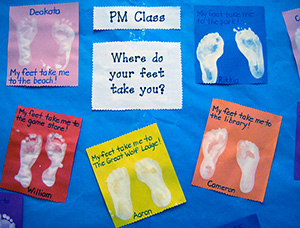READY TO LEARN
World of Words
WOW Photos
Vocabulary Curriculum Trial
January thru May of 2007
Photo Journal Summary
Part II: Activities and Extensions to Support Learning
(Go back to Part I: Elements of the WOW Curriculum)
Rather than provide recommendations for specific activities and extensions, we offered our first teachers the opportunity to develop creative ways to reinforce the curriculum during free play and at other times of the day. Here are some examples from the categories they taught.
Learning About Pets
The first category taught in the 2007 trail was Pets. Below a student is shown with his class' pet parrot. Some classrooms had already integrated live or pretend pets into classroom life. WOW lessons introduced a number of new words and concepts, building on children's prior knowledge of pets.
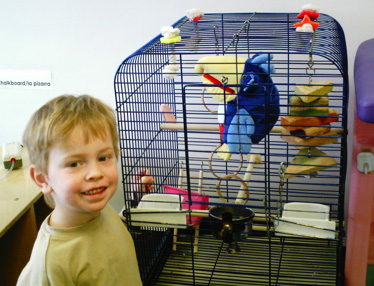
Field Trip: Some teachers took their classes to the humane society to learn more about pets. Humane society staff reinforced many of the concepts taught in the WOW category, and gave children an opportunity to meet some of the animals ready for adoption. |
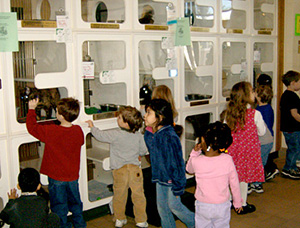 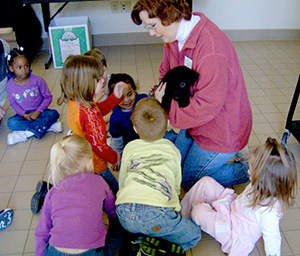 |
In addition to field trips, several teachers set up a pretend play area as a veterinary clinic where children could care for the "animals" in their classroom.
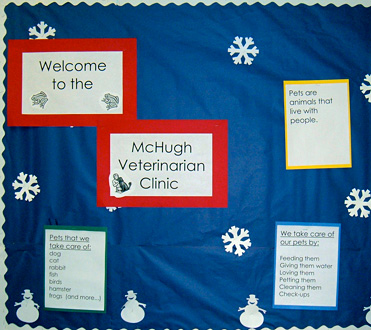
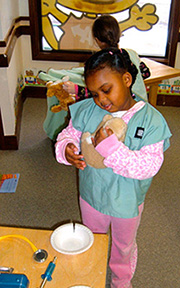
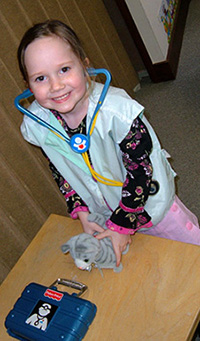
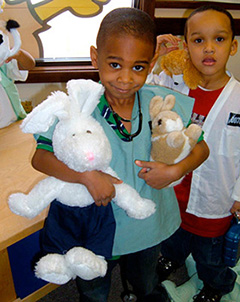
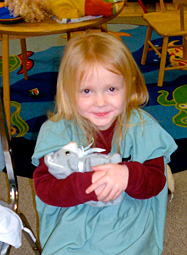
Learning About Animals in Water
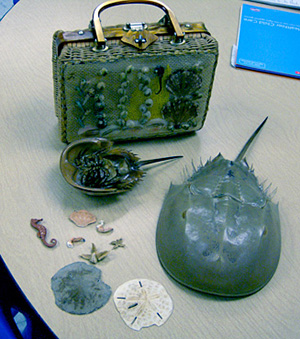
Animals in Water leant itself to a number of very creative extension ideas. Show here, teachers brought in fossils, sand dollars and shells for children to explore during free play.
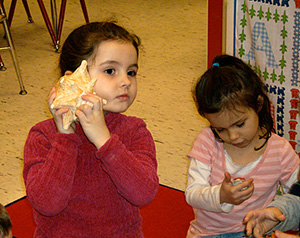
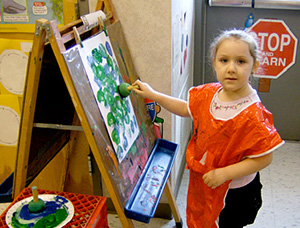
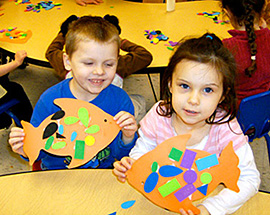 After watching an video showing a variety of sea life underwater, children created their own underwater mural.
After watching an video showing a variety of sea life underwater, children created their own underwater mural.
In one classroom, the mural surrounded a pretend play area in which teachers and children built a boat out of boxes, and took turns sailing through the water (a rug depicting an octopus, seahorse, and fish) to study the different ocean animals.
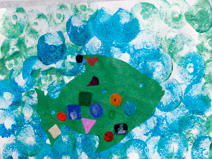
Learning About Insects
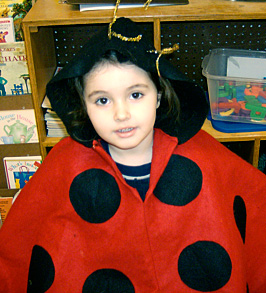
One very popular extension was created to teach children about ways in which insects hide and protect themselves.
Costumes helped children understand that insects often chose surroundings that allowed them to hide, as with the brown moth or the green praying mantis. Other insects, like the ladybug (left), look less appetizing to predators due to their special coloring
Many teachers discussed the life cycle of the caterpillar in conjunction with the WOW category Insects. Below, children are making caterpillars that will later become butterflies.
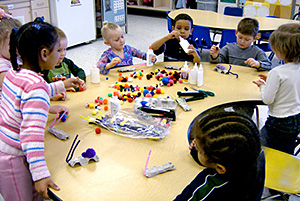
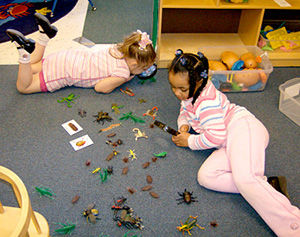
During free play, children examined plastic models of insects and other creatures, counting legs, antennae and body segments.
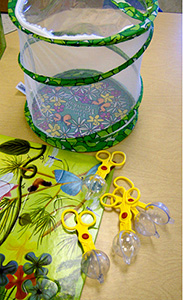
Good weather allowed some classes to go outside to collect their own specimens!
Learning About Wild Animals
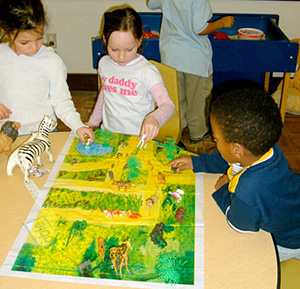
Right: Children use a safari mat to choose a habitat for each of the wild animals.
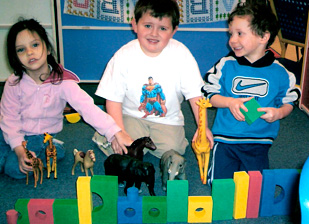 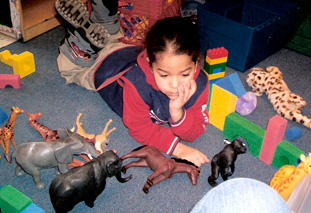 |
Left: Children build a habitat for the wild animals in their classroom collection. |
Learning About Parts of the Body
Meet Skelly, one teacher's innovation to help her children learn about different parts of the body. By the end of the category, children were able to label over 25 parts of Skelly's body. The teacher brought in x-rays of other bodies so that children could imagine what the insides of their own bodies might look like.
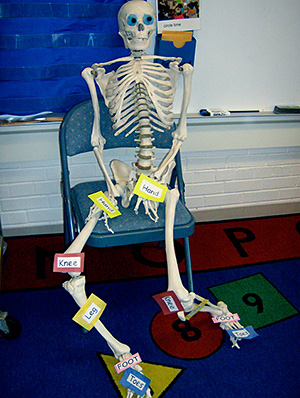
After learning to label different parts of their bodies, children talked about what each part can do. Below is an example of a journaling exercise that one teacher did with her children. As different pages were completed, they were put into books that children could take home and share with their families.
